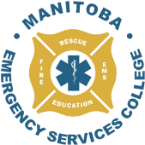999001 - Rope Rescue Awareness/Operations/Technician
Course Description
This course provides the knowledge and skills to respond to rope rescue incidents, including scene size-up, Incident Action Plans, protective and rescue equipment, low- and high-angle rescue methods, rigging, anchorages, belay operations, patient packaging and evacuation, vertical/suspension work, pickoffs, and hazard mitigations.
*NFPA 1006 - 2021 Edition, Ch. 5.1, 5.2, 5.3
Capacity: Min 8 / Max 12
Mandatory Text: Jones & Bartlett, Rope Rescue Principles and Practice, 5th Ed.
Course Outline
- Awareness Lesson 1: The Job, Scene, and its Hazards
- Awareness Lesson 2: Initiating and Supporting a Response
- Operations Lesson 1: Incident Planning and Personal Protective Equipment
- Operations Lesson 2: Rescue Equipment
- Operations Lesson 3: Ropes, Knots, Bends, Hitches, and Rigging
- Operations Lesson 4: Anchorages
- Operations Lesson 5: Fall Protection and Belay Operations
- Operations Lesson 6: Patient Evacuation
- Operations Lesson 7: Lowering Systems
- Operations Lesson 8: Mechanical Advantage Systems
- Operations Lesson 9: Working in Suspension
- Technician Lesson 1: Horizontal Systems
- Technician Lesson 2: Personal Vertical Skills
- Technician Lesson 3: Pickoff and Litter Management
Learner Outcomes
- Conduct scene size-up and Incident Action Planning in Low- and High-Angle Rope Rescue environments.
- Describe, utilize, inspect, maintain, and repair Personal Protective Equipment and rescue equipment, including ascenders, descenders, pulleys, escape devices, ropes, anchoring devices, and litters.
- Construct and utilize single, multi-point, structural, and natural anchorage systems.
- Rescue patients from a hazardous environment using a range of litters, packaging, protection, and handoff methods.
- Describe, construct, and utilize low-angle rescue systems and belay methods.
- Describe, construct, and utilize mechanical advantage for raising rescue loads, including 2:1, 3:1, 4:1, two-tensioned, and piggybacked rescue systems.
- Work and move horizontally and vertically in suspension and unstable high-angle environments, with and without patient and littler management concerns.
Prerequisites
ICS 100
Current Standard First Aid with CPR C (16 hrs)
Applies Towards the Following Certificates
- Rope Rescuer Awareness/Operations/Technician, NFPA 1006 - 2021, Ch. 5.1, 5.2, 5.3 : Rope Rescuer Awareness/Operations/Technician
